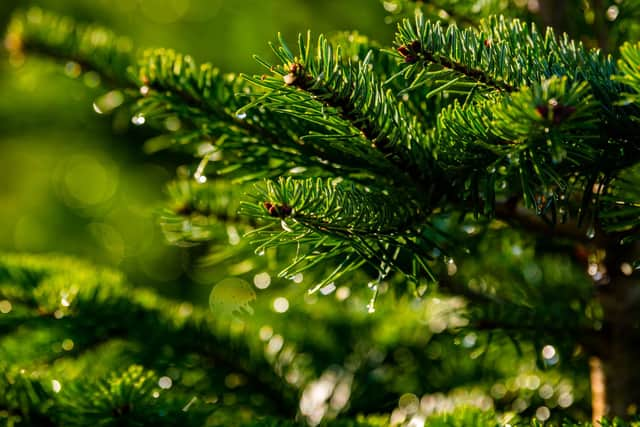How scientists in Sheffield are turning Christmas trees into new renewable fuels
Some seven million Christmas trees end up in landfill in the UK each year, releasing around 100,000 tonnes of harmful greenhouse gases into the atmosphere.
Now, as researchers in Sheffield discover a more efficient process for converting chemicals, it is hoped their findings can help reduce the UK's carbon footprint.
Advertisement
Hide AdAdvertisement
Hide AdThe University of Sheffield and the University of Valladolid have found a way to make formic acid for use in hydrogen fuel cells, that could act as a food preservative or in agriculture. It means pine needles collected after Christmas each year could be used to replace less sustainable chemicals.


The research was carried out by PhD student María Andérez-Fernández, visiting Sheffield's chemical and biological engineering department from the University of Valladolid.
Under the supervision of Dr James McGregor, she was able to build on earlier studies that found a number of useful products could be made from the chemicals of pine needles.
With heat and solvent it could be broken down into a liquid for sweeteners, paint, or adhesives, the study found, or a solid product for use in industrial processes.
Advertisement
Hide AdAdvertisement
Hide AdNow a new paper, published in ACS Sustainable Chemistry & Engineering journal, outlines how pine needles can produce renewable fuels and value-added chemicals, such as preservatives used in agriculture, using only water as a solvent.
Senior lecturer Dr McGregor said: “One of the things that we do when reacting carbon dioxide to capture CO2 is to use a metal to promote the reaction.
"This can be inefficient and expensive, so we went back to some of the work we’ve done previously with pine needles, because we realised that we could potentially use these to promote turning the carbon dioxide into formic acid.”
The published work shows how reacting carbon dioxide and water together at high temperatures can make useful products.
Advertisement
Hide AdAdvertisement
Hide AdMs Andérez-Fernández said the study sets a new simpler strategy that is also more efficient.
She said: “We found that instead of the metal and the carbon dioxide reacting, we could react carbon dioxide with pine needles and water at high temperatures and a fraction of the pine needles would turn into the same product as the CO2."
An estimated seven million Christmas trees make their way to landfill at the end of the festive period. Not only is this costly, but once in landfill, each tree will release 16 kg of greenhouse gases, producing methane gas, which is 25 times more potent than carbon dioxide (CO2).
The study had also looked at different products, including sugar cane, but concluded that pine needles may be more useful in January. Such seasonal adaptations might create challenges, but also opportunities when it comes to waste.
Dr McGregor added: “It’s a place we would like to get to so that in January, we are using the millions of pine needles readily available rather than them going to landfill.”